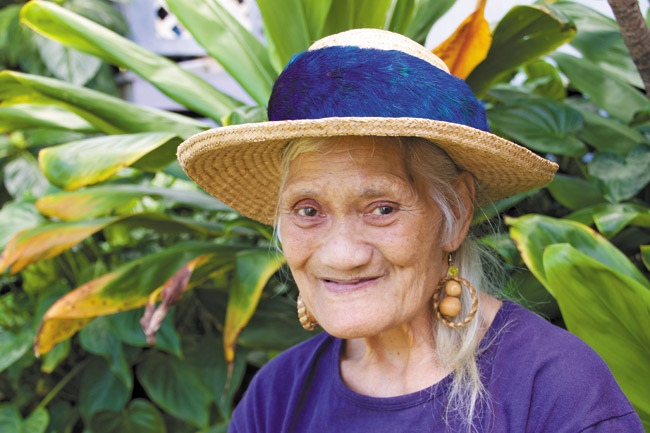How Hawaiian Language Almost Died
The first time Annie Mokiao spoke Hawaiian in school, her teacher did something shocking.
“When we used to go school, the kids – you speak Hawaiian, they slap you on the mouth. Teacher slap ’em.”
That was in the 1930s. Annie learned quickly that what was normal at home was considered shameful in the rest of the world.
“In our house,” she remembers, “my mother only speak Hawaiian, she don’t speak English.”
So Annie grew up with a severe case of cultural schizophrenia.
Namaka Rawlins is director of Strategic Partnerships and Collaboration for Aha Punana Leo, which, since 1983, has fought for the revitalization of the Hawaiian language. She says Aunty Annie’s story is all too common among kupuna.
“They were born at a time when we still had a law that said the Department of Education would only have English in the classrooms. Children were reprimanded and punished for using Hawaiian in schools. We’ve heard this from many of our kupuna.”
Hawaiian children were scolded, slapped and rapped with rulers for speaking in their native tongue.
In fact, the language of Hawaii almost died. From the Aha Punana Leo web-site:
“In 1896, education through the Hawaiian language in both public and private schools was outlawed on the model of U.S. policy towards the use of American Indian languages in education. Teachers are told that speaking Hawaiian with children will result in termination of employment. Children are harshly punished for speaking Hawaiian in school”
The lowest point, according to Rawlins, was a 1982 survey that identified fewer than 50 children who could speak Hawaiian fluently. Again from the website:
“By 1984, the community of fluent speakers had dwindled to a few elders and a tiny geographically isolated population on the island of Ni’ihau. Hawaiian language speaking children under the age of 18 numbered less than fifty. The demise of Hawaiian language was imminent.”
But the language did not die.
Initially the push for revitalization came from a handful of educators at the University of Hawaii, native speakers from Niihau, and parents. In 1983, in an effort to raise a new generation of native speakers, they created Punana Leo (which means “nest of voices”) and the first Hawaiian language preschool in Kekaha, Kauai.
Just how far has the movement come from that very modest beginning? A couple of weeks ago, the Hawaii Board of Education reaffirmed and strengthened its commitment to Hawaiian education and immersion programs in public schools. Its 2014 policy states, “Hawaii’s public education system should embody Hawaiian values, language, culture and history as a foundation to prepare students in grades K-12 for success in college, career and communities, locally and globally.”
The U.S. Census for the year 2000 shows the number of people who say they speak Hawaiian is roughly 26,000. That number is probably inflated, as the census does not ask level of fluency. Still, considering where we were in 1983, the growth is remarkable and heartening.
The ‘Olelo Hawai’i movement has become unstoppable. Today, thousands of children are exposed to the language and culture of Hawaii in public and private schools. We have access to Hawaiian language on the Internet, radio and on television.
Aunty Annie accepted the harsh lessons taught her in school, until, “When I grew up, I thought, gee, how come cannot speak our language?”
So she started speaking Hawaiian again to anyone who would listen. And that got her noticed. She was asked to become a kupuna at Maunawili Intermediate and at Ala Moana Elementary, teaching Olelo Hawaii to new generations of kids.
Aunty Annie is retired now. She may be a bit tired after raising nine children. She has more than 28 grandchildren and eight great-grandkids that she knows of. None of her own kids speak Hawaiian. But to her great joy, she can converse in ‘Olelo Hawai’i to a great-granddaughter and great-grandson who both went to immersion schools. How times have changed.
And Aunty Annie says she will never tire of sharing her knowledge.
“I want to teach anybody,” she says. “Anybody who want to learn, I’ll teach ’em. As long as I’m living, I teach.”
jmoonjones@yahoo.com
Twitter:@JadeMoon1






